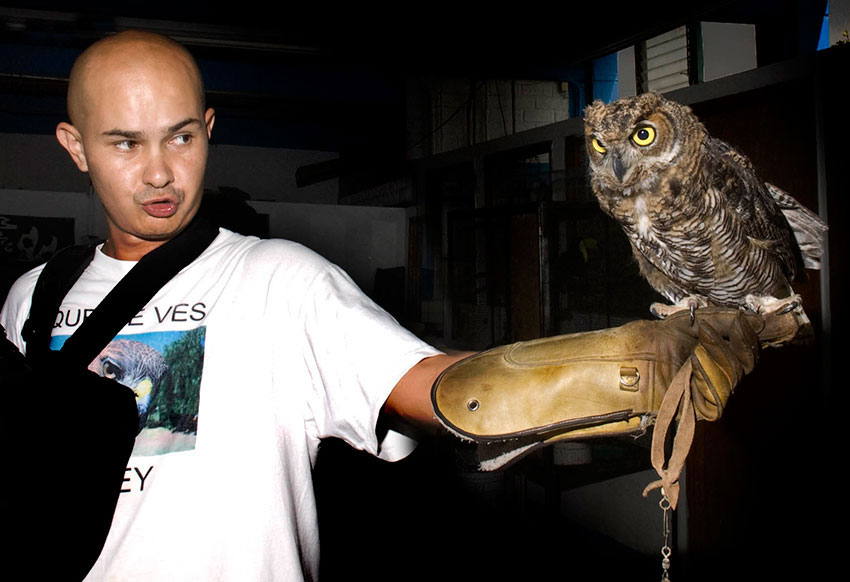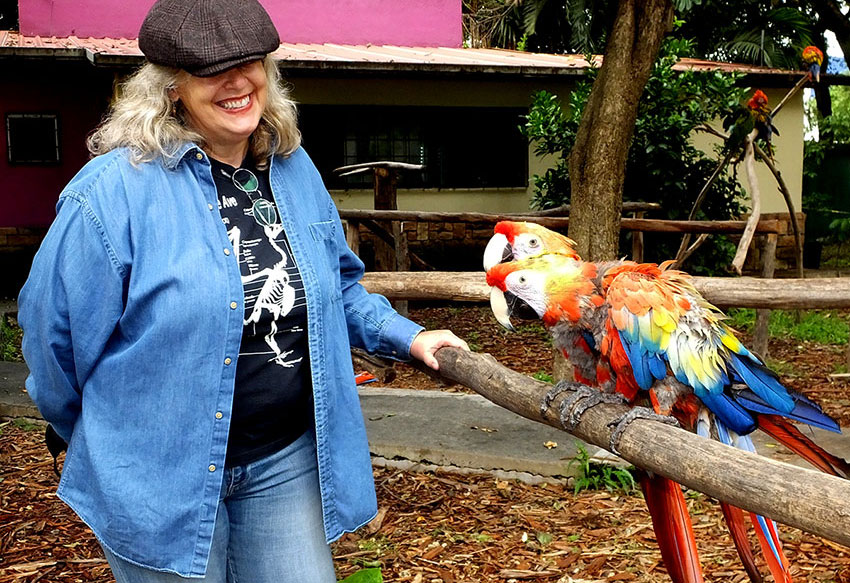Once upon a time, Mexico had an excellent nationwide network of centers — founded in 1988 — called CIVS (Centro para la Conservación e Investigación de la Vida Silvestre) which were dedicated to rehabilitating and returning to the wild all sorts of exotic animals which, for one reason or another, found themselves in deep trouble.
It was the CIVS center in Guadalajara that came to the rescue of a crocodile nearly two meters long which was discovered in 2009 swimming around in a lagoon inside the very popular Primavera Forest, located just west of the city.
Park rangers had long heard rumors about a croc lurking somewhere among the park’s 30,500 hectares of hills and canyons, but they assumed their informants had probably seen a turtle and with a bit of imagination — or a bottle of tequila — had turned it into one of those large reptiles normally seen near the Pacific coast.
Then, one of the rangers actually spotted the creature with his own eyes and imagined it had been abandoned there by “someone ignorant of how much damage such an action could cause not only to the animal, but also to the equilibrium of the local ecosystem.”
Capturing the crafty croc took three days and nights, I was told by Andrés González, then director of CIVS Guadalajara, “but eventually we caught him and now he is back among his own kind in an estuary on the Pacific Coast.”

Another creature saved by CIVS was Arnolda the lioness. She had been kept at a restaurant in Mismaloya, south of Puerto Vallarta, and had been named after Arnold Schwartzenegger, who starred in the film Predator, which was filmed in that area in 1987.
In 1994, CIVS began to receive reports from customers at the restaurant, especially tourists, claiming the lion was in terrible condition. CIVS investigated, rescued the animal and brought it to Guadalajara. “I couldn’t believe what they had done to that poor creature,” Andrés González told me. “Arnolda weighed only 46 kilos. She had pneumonia and was suffering terribly because her teeth had been ground down, exposing the roots.”
Arnolda stayed at CIVS one year, during which time her teeth were capped by a volunteer dentist and her pneumonia was cured. “After a year, Arnolda was fat and happy,” commented González, “but we couldn’t find any place in Mexico that would take an adult lion, so we sent her off to a wildlife organization in California. Aeroméxico gave her free transportation to the U.S.A.”
A few years ago, Mexico had 11 CIVS centers located all around the country and all of them had a marvelous reputation for their dedication and efficiency. A center typically had only two paid staff members assisted by numerous volunteers and much of the equipment they needed was either homemade or paid for out of the workers’ pockets. It was hoped that these centros de rescate would be considered models for the opening of many more such animal rescue centers in other parts of the country.
Then something happened during the administration of President Peña Nieto. First I was told that CIVS Guadalajara was being closed and then I heard that eventually all the centers in the country would be closed. These closings, I was told, were just part of more widespread changes affecting all government organizations dedicated to nature conservation and ecology.
Nothing of the sort had been reported in the media, yet rumors persisted that many “green” organizations in the government were being defunded and downsized.

In an attempt to get some facts, I asked the environmentalists I knew for their opinions. To my surprise, every one of them agreed that something bad was in the wind. I heard stories of drastic reductions in budgets and even cases where biologists and veterinarians were fired and replaced by political appointees with no qualifications or experience. “It’s because they want to open the door to fracking in Mexico,” some said.
Whether these rumors were true or not, I don’t know, but one by one Mexico’s CIVS wildlife centers actually were shut down, the last one closing in 2019. “And in that year alone” says the newspaper Excélsior, “those centers that were still operating managed to save 3,094 animals.”
As for the reason the centers were shut down, government sources told Excélsior they were closed due to “budgetary restructuring aligned to the principles of austerity of the ‘Fourth Transformation.'”
“So what is going to happen now?” I asked conservationist Rodrigo Orozco. “If someone finds a lynx with a broken leg in her back yard, what does she do?”
“We Mexicans are very adaptive and imaginative,” Orozco answered. “We have to be with the kind of politicians we have. So, new animal shelters are arising from the ashes. Shall we go to visit some of them?”
A few days later, we drove to the center of Guadalajara, to Agua Azul, one of the city’s oldest and most popular parks, famed for its aviary, orchidarium and butterfly farm, as well as its new Jardin Educativo, where visitors can take a walk while learning all about cacti, agaves and succulents.

Here we were met by Guadalajara’s park manager, Karina Aguilar.
“We have a great deal of space on our grounds, 416 hectares to be exact, and we are biologists,” Aguilar told me, “so when we heard the CIVS centers were being shut down, we began taking in animals needing help.”
Because Agua Azul has an aviary, they are particularly well prepared to help injured or abandoned birds and you might say they specialize in macaws.
I asked the team at Agua Azul for an example of one of their rescue projects.
“Bueno,” said veterinary doctor Edgar Ramírez, “let me tell you about our owls. One day somebody brought us two big owls in a rather small cage, both of them with their wings clipped. Their owner had been feeding them chicken and there was no way those owls could be returned to their natural habitat because they didn’t know how to hunt. So, over time we presented them with different types of prey and one of them learned to hunt well.
“After a year, we let it go, but the other one needed more training and more time for its wings to grow to full size, so every day we would bring it rats and other small creatures and just last month we felt our pupil was finally fit to fly and ready to be out on her own. We’re happy to report that the neighbors where we liberated her say they hear her hooting every night, so we think she is doing fine.”
[soliloquy id="121244"]
Karina Aguilar then showed me another owl that’s ready to be released. “This lechuza arrived here with a leg which had been broken and had healed on its own, but in the wrong position, leaving the poor bird with one claw facing upward and one down. We figured we would have to amputate, but then we saw that the owl had learned to live with this and could hunt and eat quite well.
“We figure she is now ready to be released and we are going to let her go in this neighborhood since we have other owls of the same species around here. In fact, she already has a male friend who visits her all the time, so we have a plan to build her a cage on top of our water tank and let her get used to living there little by little. And then, one day, we will leave the door open.”
Not all these stories have a happy ending. A recent Agua Azul project involved the rehabilitation of a crow which had lived its entire life in a cage in the center of Guadalajara. “It was used to eating crackers and potato chips,” park staff told me. “So we invented healthy crackers for it and began to train it to hunt, using falconry techniques but, sad to say, the crow’s health began to fail and we didn’t know what to do. After it died, we performed an autopsy and discovered this crow had the equivalent of chronic smoker’s lung. It had been suffering from terrible necrosis, the result of breathing smog its entire life.”
Happily, several other animal rescue centers have sprung up around Guadalajara and I will report on them in the near future.
If you live in the Guadalajara area and happen to spot that limping lynx in your back yard, call 332 088 8988. The animal rescue people at Agua Azul are on duty every day of the week from 9:00 a.m. to 9:00 p.m.
The writer has lived near Guadalajara, Jalisco, for more than 30 years and is the author of A Guide to West Mexico’s Guachimontones and Surrounding Area and co-author of Outdoors in Western Mexico. More of his writing can be found on his website.
